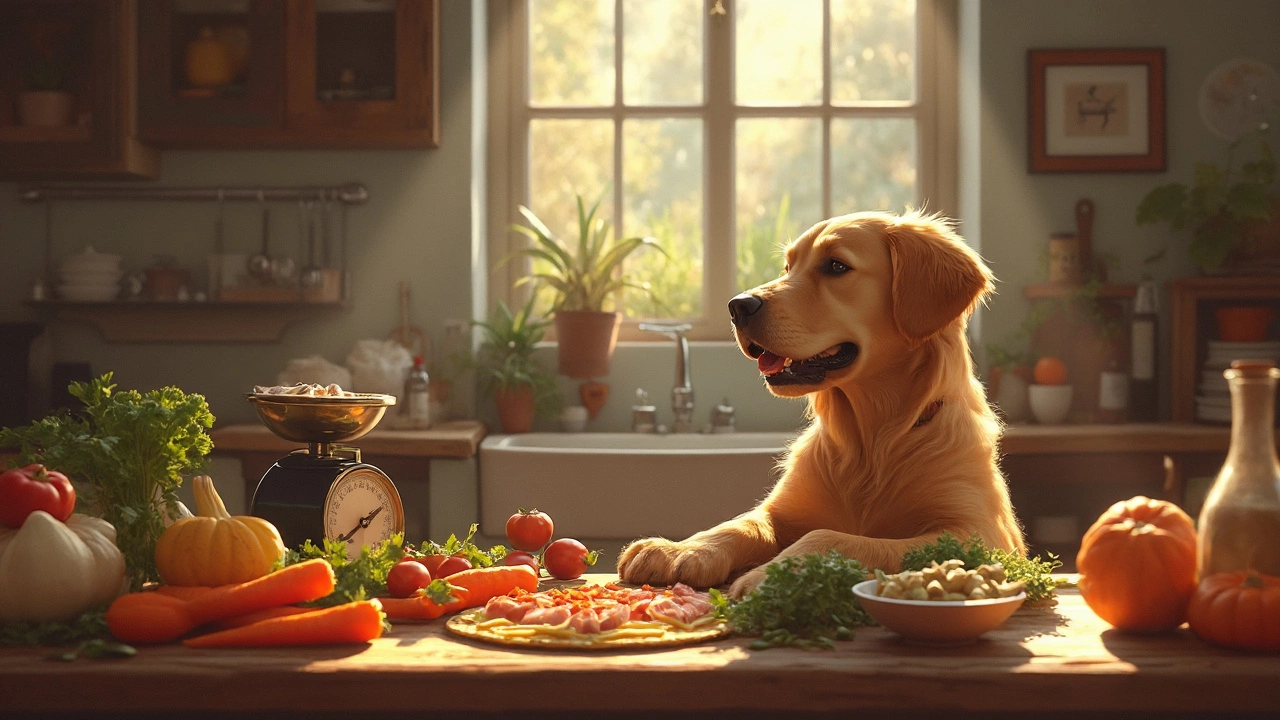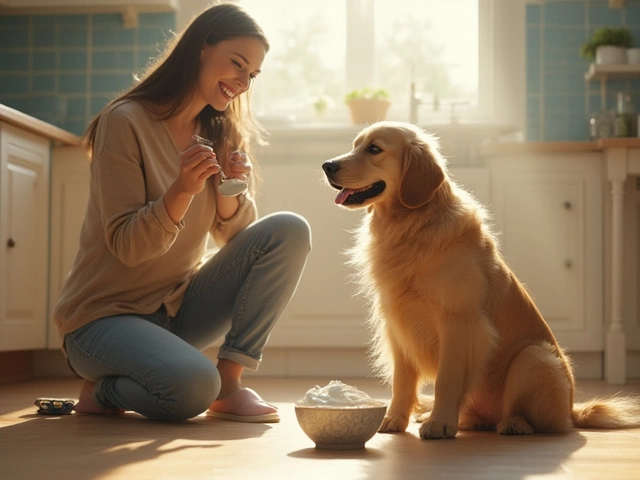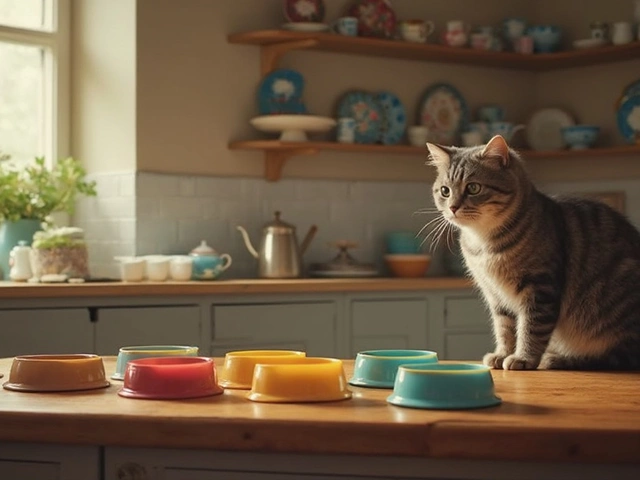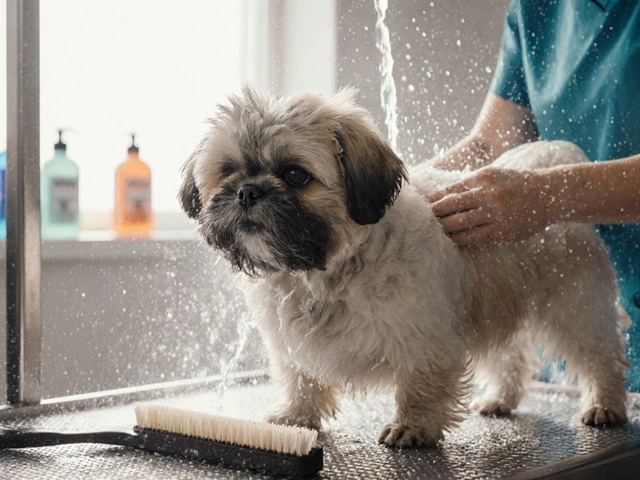Ever found yourself running low on dog food and wondered if there’s something in your kitchen that could fill the void? Well, you’re in luck, because many everyday foods are not only safe for your dog but also nutritious. Think about plain, cooked meats like chicken or beef. These are high in protein and perfect for ensuring your dog stays healthy and energetic.
However, it’s not just about throwing them some meat and calling it a day. Dogs need a balanced diet, too. Adding cooked veggies like carrots or peas is a great way to sneak in some needed vitamins and fiber, aiding digestion and overall health.
As exciting as giving your pet a slice of your lifestyle might seem, there are certain foods you need to keep off the menu. Foods like chocolate, onions, and grapes are toxic to dogs and should be avoided at all costs. Remember, just because we enjoy it doesn’t mean it’s safe for them.
Safe Everyday Foods
If you're thinking about broadening your dog’s palate beyond the dog food aisle, you’re not alone. There are plenty of dog food alternatives to explore. Here’s a list of safe everyday foods that your pup can enjoy.
Protein-Rich Foods
Let’s start with proteins, the building blocks for your dog's cells and tissues. Cooked meats such as chicken, turkey, and beef are excellent options. Ensure they're plain—skip the seasoning and spices, as some ingredients like garlic can be harmful.
- Chicken: Remember to discard any bones and skin. Boneless, skinless chicken is ideal.
- Eggs: Scrambled or boiled, eggs are nutritious and easy to prepare.
Carbs and Grains
Carbs don’t have to be a bad word. Brown rice and oatmeal can provide the energy your dog needs to fetch for days.
- Brown Rice: A small portion of cooked, plain brown rice can help fill up your dog's tummy.
- Oats: Consider adding a spoonful of cooked oatmeal for a fiber boost.
Fruits and Vegetables
Adding a splash of color with fruits and veggies can be tasty and healthy. They offer essential vitamins, minerals, and fiber.
- Carrots: Crunchy, raw, or cooked carrots are a sweet snack.
- Apples: Sliced apples (without seeds) can make a refreshing treat.
- Peas: Fresh or frozen, peas are a fun way to add some greenery.
Other Healthy Additions
Sometimes the smallest additions make a big difference.
- Plain Yogurt: Offers probiotics for better digestion. Serve in moderation.
- Sweet Potatoes: Bake them and remove the skin for a fiber-rich addition.
Always remember to introduce human food for dogs slowly and watch for any allergic reactions or digestive issues. Keep your dog's size and dietary needs in mind, ensuring they get a balanced mix of nutrients from everything you offer.
Nutritional Necessities
If you’re thinking about swapping your pup’s kibble for wholesome natural alternatives, there are some essential nutrients you can't ignore. Dogs, much like humans, need a well-rounded diet to thrive.
Proteins are a Must
Proteins should be a major component of your dog's diet. They help in maintaining strong muscles and tissues. Choose lean meats like chicken, turkey, and beef. Eggs are another excellent protein source they can savor.
Healthy Carbs
Dogs also need carbohydrates as a source of energy. Sweet potatoes and rice are both digestible and a good energy source. Additionally, quinoa is a gluten-free option packed with nutrients.
Fats for Energy
Contrary to popular belief, fats are vital in a dog's diet. They provide energy and help absorb certain vitamins. Sources like fish oil can offer omega-3s, essential for a shiny coat and healthy skin.
Vitamins and Minerals
Just like us, dogs need their vitamins and minerals. Leafy greens such as spinach and kale are rich in vitamins A, C, and K, while carrots can provide a sweet vitamin boost.
Balancing Meals
- Ensure every meal has the right balance of proteins, carbs, and fats.
- Introduce new foods slowly to monitor any adverse reactions.
- Regularly consult with your vet to tailor meals to your dog's specific needs.
Switching to homemade dog meals can be a rewarding experience for both you and your furry friend. The key is keeping these nutritional necessities in mind, ensuring your dog gets what they need to stay healthy and happy.
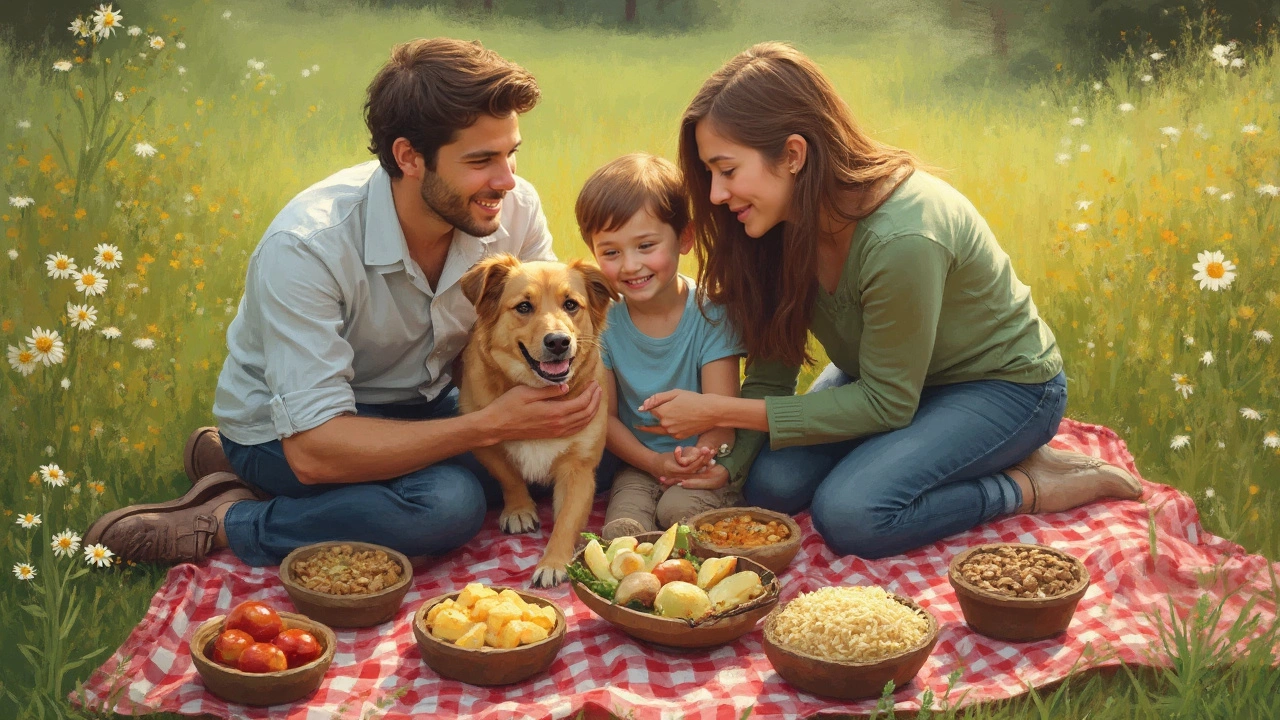
Foods to Avoid
When sharing your meals with your furry friend, it’s super important to know what can potentially harm them. Not all human foods are safe for dogs. In fact, some everyday foods can cause serious health issues.
Harmful Foods
- Chocolate: This sweet treat is toxic to dogs due to a compound called theobromine. Even small amounts can cause vomiting, diarrhea, rapid breathing, or even seizures.
- Grapes and Raisins: They seem harmless, but grapes and raisins can cause kidney failure in dogs. It's best to avoid them entirely.
- Onions and Garlic: These can destroy a dog's red blood cells, leading to anemia. Be cautious with ingredients like garlic powder that sneak into many recipes.
- Xylitol: Often found in sugar-free gum and candies, this sweetener can lead to a dangerous drop in blood sugar and liver damage.
- Alcohol: Even in small amounts, alcohol can be lethal for dogs. Never let them sample your beer or wine!
Common Misconceptions
Not everyone knows that some foods are dangerous, often due to myths or misinformation. For instance, it’s a myth that bones are safe for all dogs. Cooked bones can splinter and cause obstructions or tears in the digestive tract.
Keep an Eye Out
| Food | Why Avoid |
|---|---|
| Macadamia Nuts | Can cause muscle weakness and tremors |
| Avocado | Contains persin, toxic in large quantities |
Always double-check before sharing your food. When in doubt, stick with their usual dog food alternatives.
Transition Tips
Switching your furry pal from commercial dog food to home-cooked meals can be a win for their health, but it's important to do it right. Jumping straight into a new diet can confuse their digestive system and lead to upsetting tummy troubles. Here are some simple steps to make the switch smoothly.
Start Slow
Introduce new foods gradually. Mix a bit of the new food with their usual dog food. Begin with a small portion, like 25% of the new diet mixed with 75% of the old. Over a week or two, slowly increase the new food ratio while decreasing the old one until it fully replaces the previous diet.
Observe Your Dog
Keep an eye on their reactions. Are they energetic and playful after meals? Or are they experiencing any digestion issues like vomiting or diarrhea? Every dog is different, so what works for one might not work for another. Fine-tuning based on your pup’s response is key.
Nutritional Balance
When crafting a home diet, ensure it's balanced. Research shows that 95% of home-cooked dog meals are unbalanced. Make sure you’re covering protein, fats, carbohydrates, vitamins, and minerals. You might even consider consulting a vet or a pet nutritionist to help craft recipes that meet all their nutritional requirements.
Supplements
You might need to introduce supplements to cover what homemade diets lack. Some common supplements include calcium, probiotics, or omega fatty acids. Again, check with a vet to make sure you’re not doubling up on anything your pet's already getting enough of.
This transition not only enriches their diet but strengthens your connection with your dog as they relish meals you’ve made with love. Just remember, patience is your best friend in this transition. A careful and gradual approach will keep your dog's health and happiness in check.
